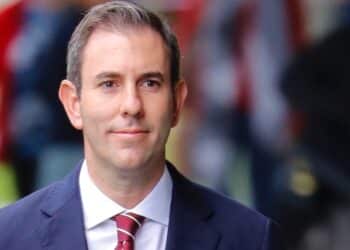Accountants and financial advisers were on the same page when it came to the AISC levy — both groups wanted it capped or scrapped. With the advice sector already under immense cost pressures due to successive waves of regulatory change following the royal commission, news from ASIC of an impending levy increase came like a knife to the heart in March.
In a summary of actual levies for 2020, ASIC revealed it would charge a minimum sum of $1,500 per licensee that provides personal advice to retail clients, plus $2,426 per adviser. This boosted the cost to a whopping $3,926.
The regulator’s news confirmed the concerns the Association of Financial Advisers (AFA) raised after ASIC issued drastically revised estimates of advice levies in November, revealing a 60 per cent boost compared with its June estimates of $1,571 per adviser.
After these concerns were taken to the Treasury, ASIC scrapped the estimates before re-posting them in early February.
This, understandably, kicked off a storm, and in March, Chartered Accountants Australia and New Zealand, CPA Australia, the Financial Planning Association (FPA) and the Institute of Public Accountants (IPA) inked a joint statement arguing against the industry funding model.
The bodies united in drawing attention to the levy’s illogical perseverance despite innumerable changes to the industry. For example, they noted that while banks had largely ceased operating financial advice businesses, ASIC’s budget to oversee financial advisers had increased from $25.6 million in 2017- 18 to more than $56 million in 2019-20.
“This is largely due to supervision and remediation of historic deficiencies in the banks.
“Declining adviser numbers mean that remaining participants must shoulder a heavier proportion of the total cost,” the group argued.
“This is impacting the viability of remaining businesses. Ultimately, this has flow-on effects for competition and the accessibility and affordability of financial advice.”
Further, the group cast a light on the regulator’s industry funding estimates, which were often published with massive delays, after actual levies had been determined with significant increases. For example, budget estimates for ASIC’s 2020-21 CRIS were first offered to the Parliament in October 2020, before it was released on 23 July this year, some nine months later.
The battle
In July, it was the FPA’s turn to take another stab at the government by strongly recommending that the ASIC industry levy be reviewed immediately to provide a more equitable and predictable annual levy.
The FPA cited two “major” issues that had to be addressed: the unpredictability of the levy amount, which resulted in planners being unable to budget for the cost; and the rapidly increasing levy rate, which overtook an adviser’s ability to grow revenue.
“As a first step in addressing these challenges of predictability and dramatic levy increases, we call for the government to urgently and immediately undertake a review of the ASIC industry levy,” FPA CEO Dante De Gori said at the time.
“It has been four years since the levy was first introduced, and it is now critical to review its implementation and impact on the financial services sector. Making financial advice more affordable for all Australians starts with making financial planning more affordable to practice.”
The Stockbrokers and Financial Advisers Association (SAFAA) followed by similarly demanding an “urgent” review.
At the time, SAFAA chief executive Judith Fox said the government needed to take immediate action, noting several concerns.
“We are concerned that the costs of the new disciplinary body that are incurred by ASIC will be passed on to our members and push up the final levy,” Ms Fox said.
“ASIC’s cost estimates have routinely been between 25 and 55 per cent less than the final levy amount, making it extremely difficult for businesses to plan for this expense.
“We call on the government to urgently review the ASIC levy model and make it more granular and risk-based to more accurately reflect the firms that are generating the enforcement and supervisory work.
“Advice to Australians cannot be made more affordable if the costs of providing that advice increase remain unchecked.”
The battle – part 2
The corporate regulator’s cost recovery implementation statement for the 2021 financial year added further fuel to the fire by putting the costs allocated by ASIC to the advice sector at $72.2 million or $16 million more than a year earlier when levies rose to $2,400 per adviser.
The regulator revealed at the time that of the total costs charged to the advice industry, $55 million would come from the cost recovery levy and $16 million from the statutory levy, which covered issues such as financial literacy education.
Of the $55 million, $16 million would come from enforcement, $8 million from supervision and surveillance, and $22 million from indirect costs including governance, property and IT support.
A further $600,000 was said to be charged for further recovery of last year’s costs, indicating expenses charged to the sector may have exceeded even ASIC’s final estimates for the year, which (to reiterate) were 60 per cent above what was outlined at the end of FY20. This heavy news confirmed a dramatic rise in the supervisory levy for the advice industry.
And it was then that the corporate regulator itself conceded that it was not blind to the woes of advisers, as many had come to believe, admitting in late July that supervisory costs allocated to the advice industry could balloon out further, noting it could be forced to divert resources from other departments to deal with a potentially wide scope of matters related to the new disciplinary body.
“It’s hard for us to estimate the exact level [of resources] going back to the fact we don’t know how many and what sort of matters we will refer to the panel,” ASIC executive director of financial services and wealth Joanna Bird said before a Senate economics committee at the time.
“That is going to be a huge determinant in how much this process will cost. The bill places a large number of obligations on ASIC — we will meet those obligations using existing funding [but] that will mean we may need to look at some of our existing business-usual work and re-prioritise to ensure we meet our obligations under this bill.”
The banks
In early August, The Advisers Association (TAA) persisted with its offer of a solution, renewing calls for exiting major banks and institutions to pay their share of the ASIC levy.
“We understand that ASIC’s hands are tied in relation to cost recovery, and we are not opposed to a user-pays model. However, the users who caused the current regulatory cost burden are not being made to pay for it,” TAA chief executive Neil Macdonald said.
“By exiting advice, the big banks, despite being largely responsible for some of the poorest behaviours, are able to avoid paying.” TAA previously pushed for a fee calculated as a three-year multiple of the ASIC adviser levy, per adviser, which would be based on the institution’s adviser numbers.
“At $3,138 per adviser, this would put the fee for those institutions at almost $10,000 per adviser,” Mr Macdonald added.
“As we said earlier this year, expecting small business advisers and, ultimately, their clients to keep paying ever-increasing costs for the sins of the past, largely committed by the big end of town, is unconscionable.”
The unfolding
But the blood, sweat and tears that accompanied months of protest culminated in the Treasurer’s late August announcement — the levy would be scrapped (temporarily).
In service to Australians and their never greater need for accessible and affordable professional advice, Treasurer Josh Frydenberg announced “temporary and targeted relief” for financial advisers by cutting the cost of recovery levies.
He even confirmed that while the temporary relief was in place, the Treasury would kick off a review of the ASIC industry funding model to ensure “it remains fit for purpose”. Many have since argued that perhaps it never was.
What this relief meant is that ASIC levies charged per licensee would remain at $1,500 — a substantial reduction relative to the level estimated in ASIC’s 2020-21 Cost Recovery Implementation Statement.
Moreover, ASIC levies charged for personal advice to retail clients would be restored to their 2018-19 level of $1,142 per adviser for the next two years (relating to 2020-21 and 2021-22).
“The sub-sector as a whole will pay an estimated $46 million less in ASIC levies in 2020-21 alone, with further savings flowing in 2021-22,” the Treasurer said proudly.
“The freeze in the peradviser levy will provide financial advisers with the certainty they need over the next two years to deal with the impacts of COVID-19 and further regulatory reforms making their way through the Parliament, including the introduction of a single disciplinary body and a compensation scheme of last resort.”
The FPA was quick to applaud the government’s announcement, noting the news would provide some certainty and stability to financial planners.
“This is a significant milestone for the FPA and our members, as we have been calling for a review of the flawed model since it was first proposed and then introduced three years ago,” Mr De Gori said in early September.
“We would like to thank the government for listening to our concerns and those of our members.”
Similarly, AFA national president Michael Nowak called the relief well timed (of all things).
“This is a much needed move in the right direction, and I want to thank the Treasurer, the Hon. Josh Frydenberg, MP, and the Minister for Superannuation, Financial Services and the Digital Economy, the Hon. Jane Hume, and the government for finally listening to the AFA and the advice sector,” Mr Nowak said.
“This is a significant first step in starting to address the practical impact of the reforms on the ability of financial advisers to offer everyday Australians sound financial advice to give them financial security and independence.”
Mr Nowak did, however, add that a lot remained to be done to ensure financial advice could still be delivered in an efficient and cost-effective manner.
The final chapter?
But the good news was followed by the bad. Just days later, ASIC confirmed the total regulatory costs yet to be recovered from the financial advice sector stood at $2.4 million as at 30 June 2021, substantially higher than funds owed a year earlier when the sum remained well below $300,000.
This growing pile of debt aside, the AFA declared in September that the tide was slowly, but surely, turning for the advice industry.
Applauding what he perceived as a change in tone from the government and the corporate regulator, Mr Nowak said, “This is so encouraging and gives us reason to believe that the tide is turning for advisers and the advice sector after we’ve been flooded by a tsunami of regulation.” He added: “We are being listened to, and there are actions in place to start to facilitate a more sensible working environment for financial advice.
“The hard work by the AFA and other associations seems to be working.” So far, the verdict is still out on whether the temporary levy relief constitutes a happy ending.
We’d best wait for the outcome of the funding review before we extend a hand of gratitude to the Treasurer.



